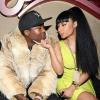Serendip is an independent site partnering with faculty at multiple colleges and universities around the world. Happy exploring!
You are here
Home » Web Paper or Special Event
By Iridium
December 16, 2016 - 09:38
“Do we take plants’ right into full account?”
My seminar professor raised this question in class for us to discuss. In my group discussion with Kat, we soon moved our focus from merely plant rights to the comparison between our attitudes towards animals and our attitudes toward plants.
During Thanksgiving break, I was in New York City meeting my high school friends. One was dressed in Canada Goose jacket, and another one was going to buy one that afternoon. In the meantime, there was a protest against Canada Goose held by animal rights protesters in Manhattan. Animal protesters argued that plucking feathers from geese are cruel practices that producers should stop producing goose down jackets and consumers should stop buying that kind of jackets.
December 16, 2016 - 09:07
Revisiting A Thought
Through the course of this E-sem class my biggest inquiry has been the term “Contact Zones.” This term or idea was first discussed, on the second week of classes, after my class read, “Arts of the Contact Zone”, by Mary Louise Pratt. I have decided to revisit this topic because I realize that in all this time, and discussion about this term, that I still have a hazy idea of what this term actually means. On the last few days of class I asked my peers, “What are contact Zones?” And While at first there were no answers, the answers that I did eventually receive seemed to be far from the actual definition of a contact zone.
December 16, 2016 - 08:41
earlier in the semester, i remember someone saying in jody's class that "safety is knowing what will happen when things become unsafe." (i wish i could remember who said this, but it's stuck with me.) these past few months, i was unprepared for the ways and times that this 360 felt unsafe. by the end of the semester my only focus was to make it through class without having a panic attack. for my final project i have created the safety planning tool that i needed way back in september, based on a model used in support work for folks who have experienced sexual harm.
December 16, 2016 - 07:22
“Funny All Her Life”:
Race, Place, and the Coming-Out Narrative in Getting Mother’s Body
* Note: I use “he/him/his” pronouns to refer to Dill, as prompted by his interest in being referred to as “Mr. Dill Smiles.”
December 16, 2016 - 06:37
“He told her, ‘Of course you will deliver abroad,’ and asked which she preferred, America or England... Aunty Uju chose America, because her baby could still have automatic citizenship there.” (Adichie 102)
December 16, 2016 - 06:09
This course has been an academic experience unlike any other that I’ve had. Never before have I found myself in a class setting that is simultaneously open and engaging. In other classes with a similar relaxed setting, I’m rarely able to give my undivided attention to the topic of discussion. However, this class was easy for me to participate in. The group discussions were always interesting and valuable.
December 16, 2016 - 05:33
Only a few things are assigned at the moment of birth. Even name can be held off from reporting: height, weight, parental identification and nationality are really the only identifiers an infant has immediately. From then on, it affects most things about that person’s life, including what rights and resources they should have access to and how they move in and out of countries and communities. Taiye Selasi’s TEDtalk “Don’t ask where I’m from, ask where I’m local” calls to shift from nationality to locality when determining how geography affects identity. She offers a defining framework of “3 R’s: rituals, relationships, restrictions.” This uses cultural practices, important people, and identity-shaping privilege to allow people to choose for themselves regional identity markers.
December 16, 2016 - 05:30
In her novel “All Over Creation” Ruth Ozeki uses the characters to explore different family dynamics and the way they affect the individual. The difference between the way Yumi raises her children and the way she was raised by her parents is striking. While her parents (especially her father, Lloyd) took an authoritarian, heavy-handed approach to raising her, Yumi instead takes an authoritative and lax approach to raising her own children. Although it is clear that her parents truly loved her, as a teenager Yumi felt suffocated by their judgements of her. In her first letter to her parents, she explains that she was sure that their shame “was going to fill every crack in the house, seep into every second of the day, and suck the air right out of me.” (Ozeki 37).
December 16, 2016 - 00:48
here are the poems that were meant to go with my paper (they're inserted into different sections of the final).
(edit: i'm including the final as well... it's attached below.)
---
(1) when i was a child i did not like bananas
they tasted foreign and uncomfortable in my mouth,
yellow peel giving way to grainy softness giving way to sweet grit on my tongue and the aftertaste -- white
i spat them out onto the table and shook my head at my mother
don’t feed me that
much later, i would learn that banana is a term for an (east) Asian who is
“yellow on the outside and white on the inside”
it made me want to spit the word out of my mouth
wipe the taste from my tongue
December 16, 2016 - 00:41
my paper actually has several pieces to it, so i'm attaching the final project as it's meant to look here.
i'll upload the poems separately in their own post.
---








